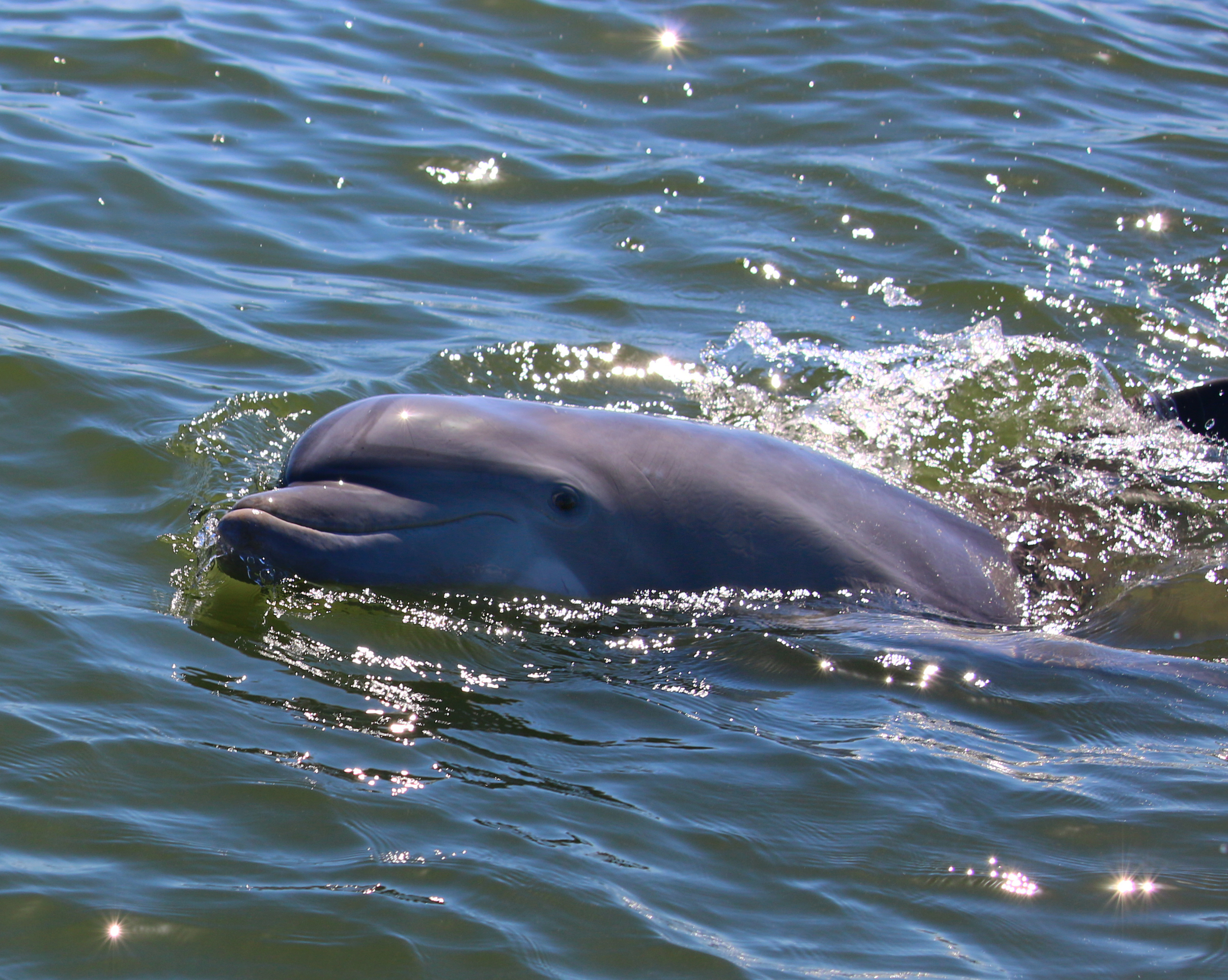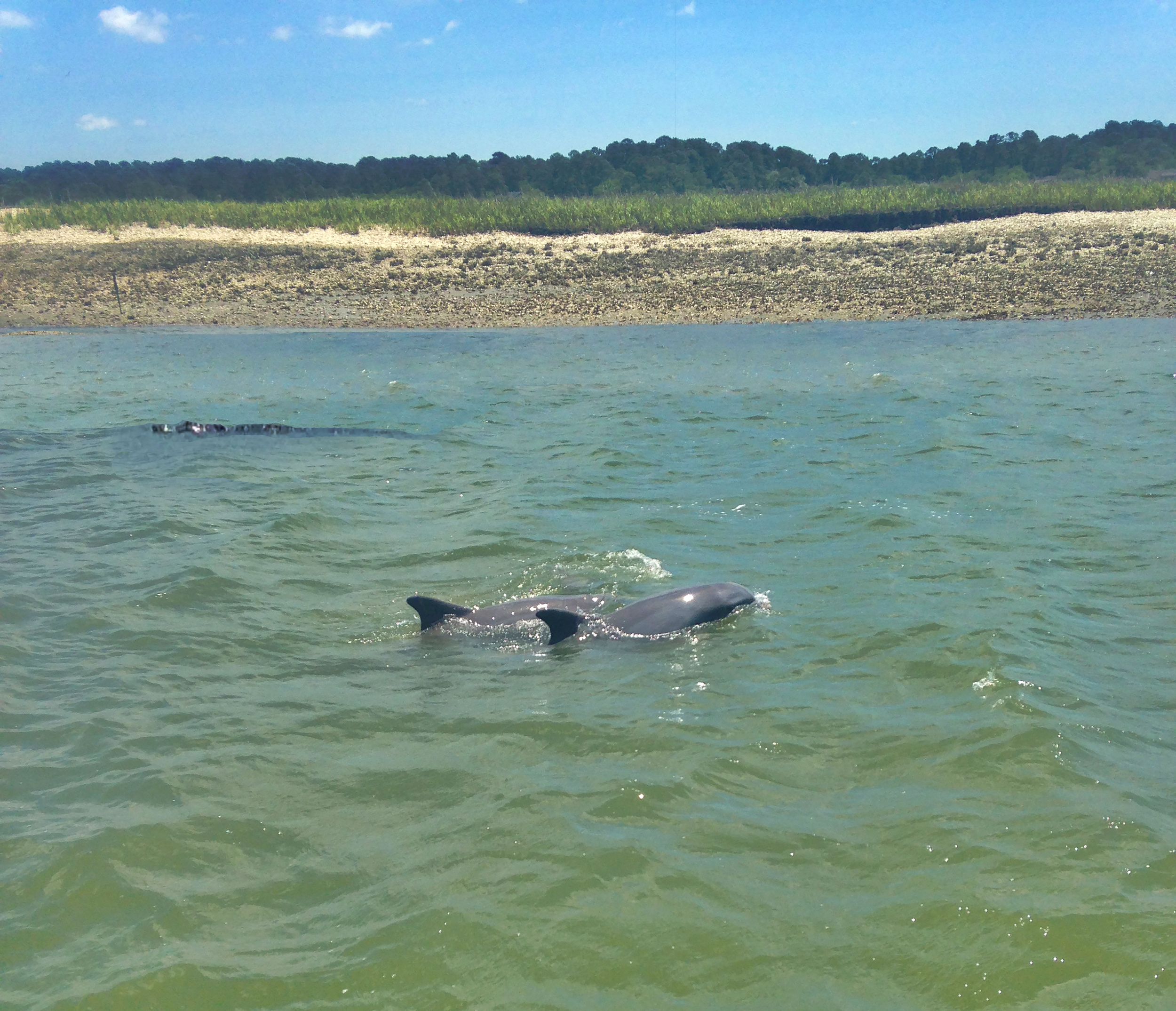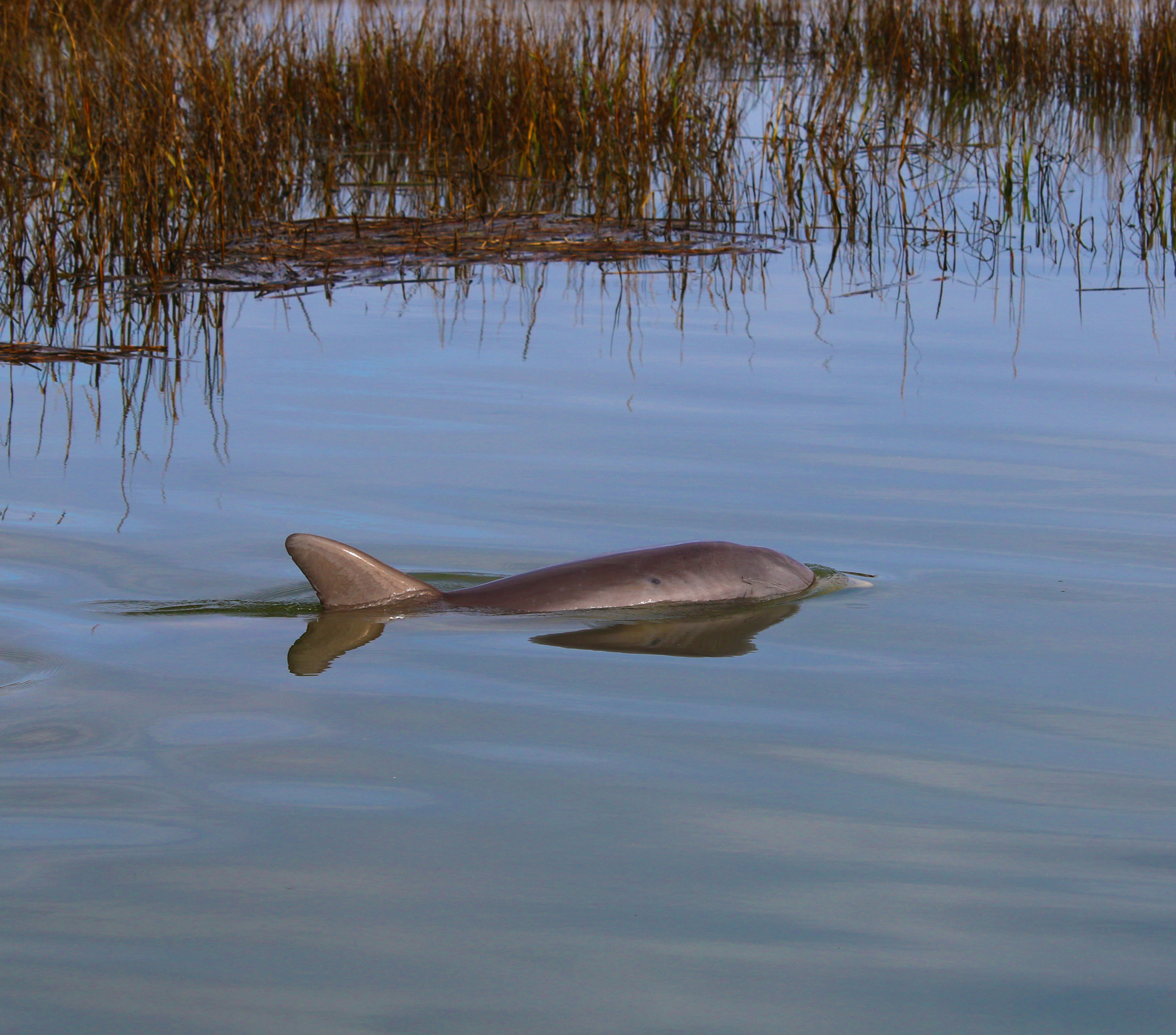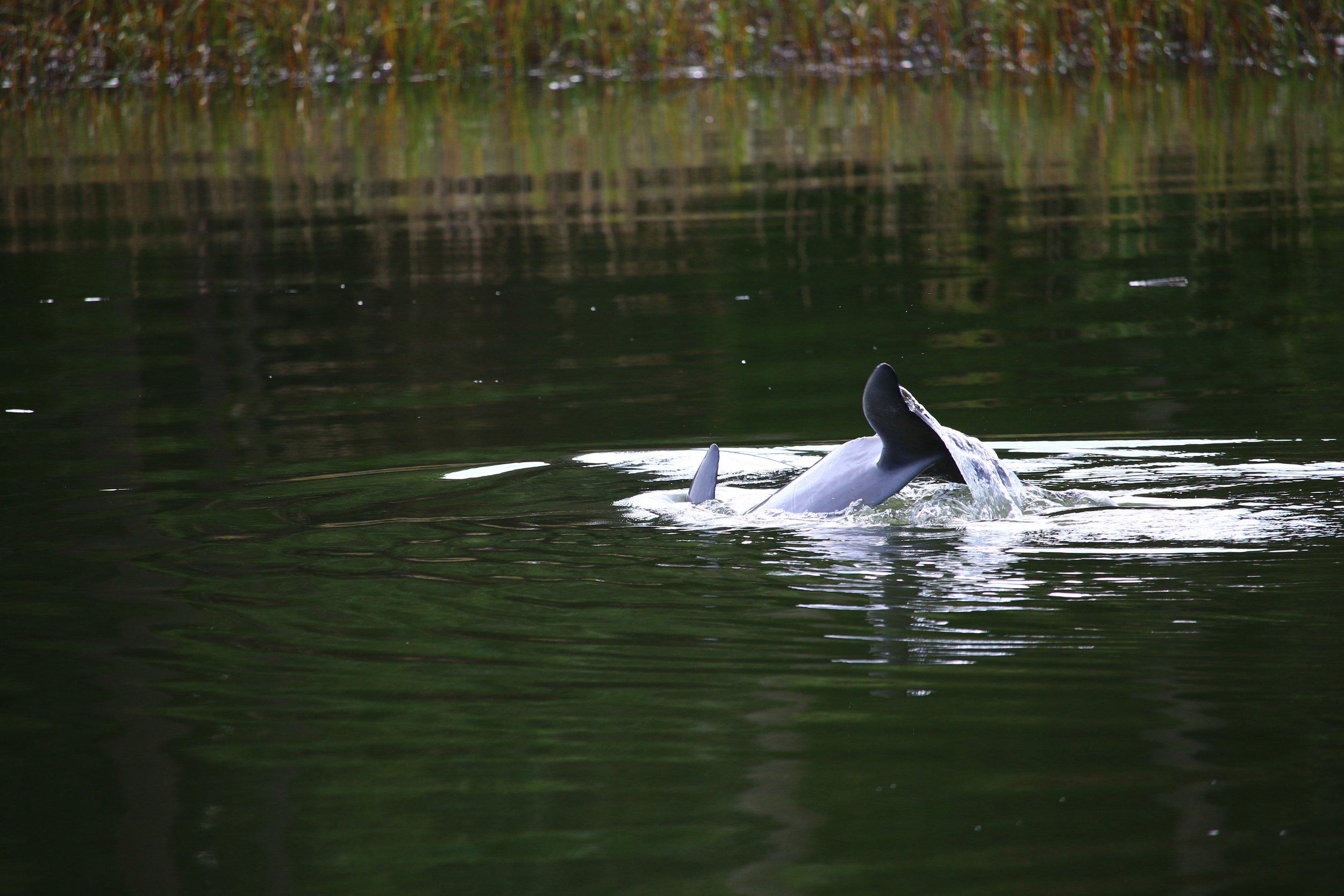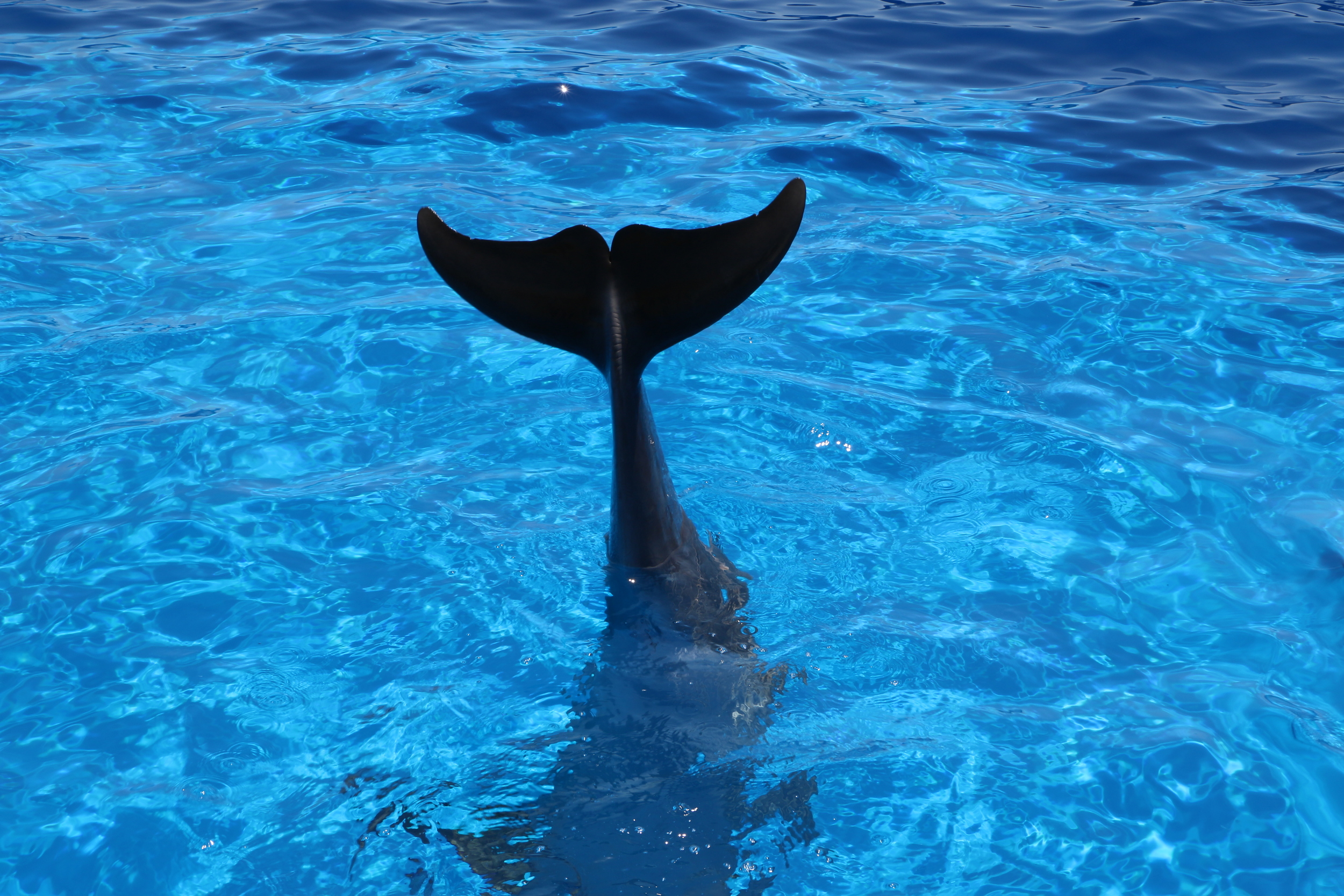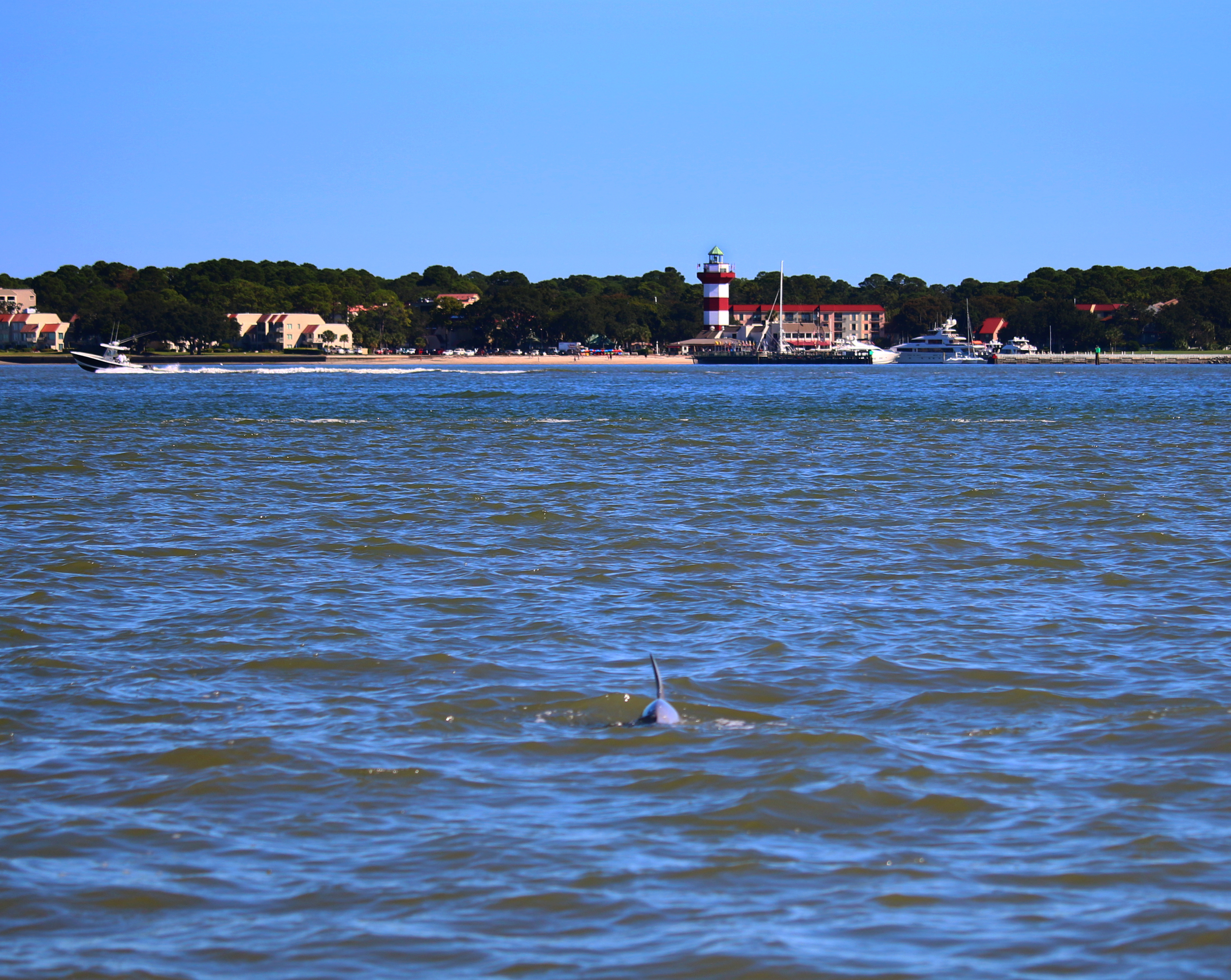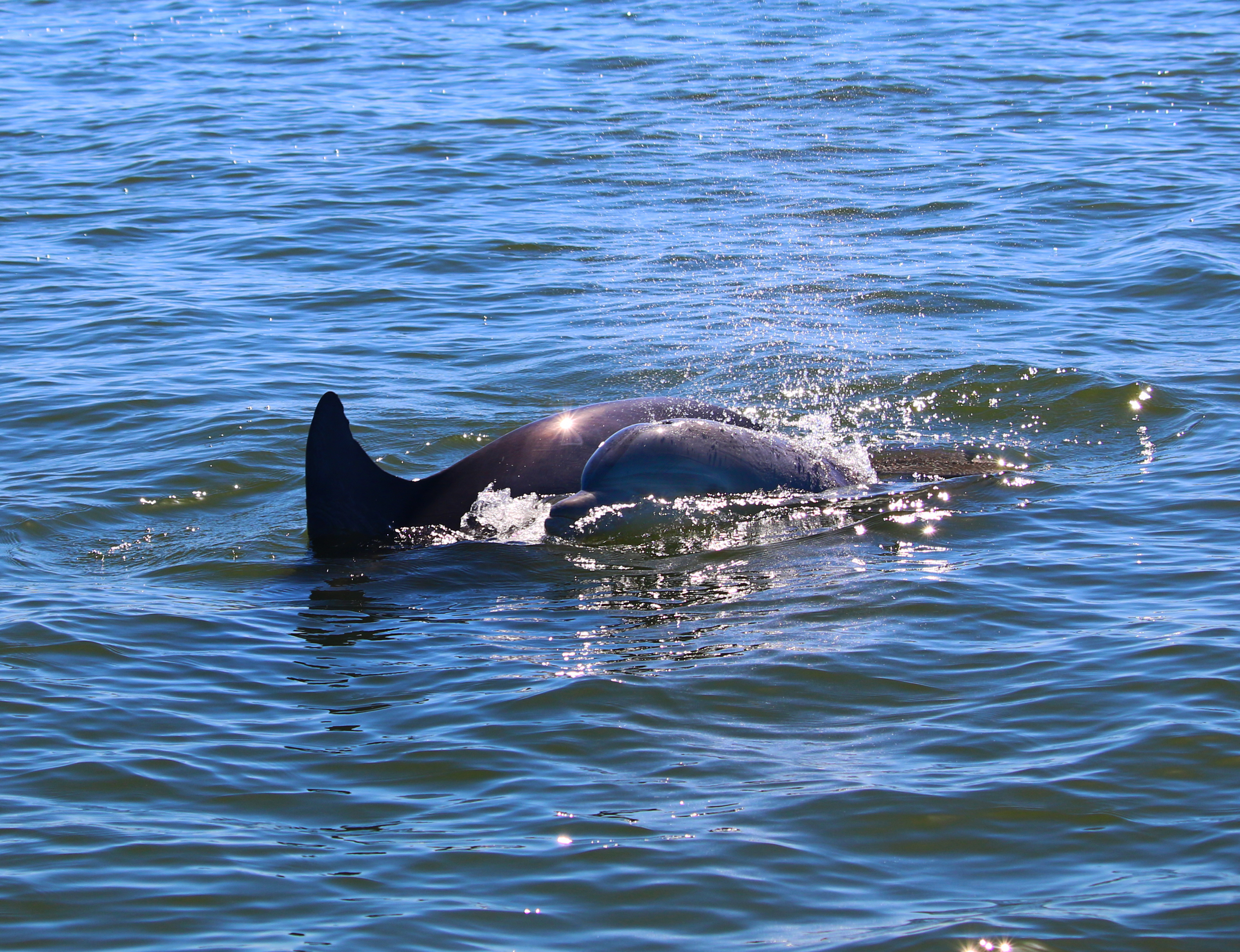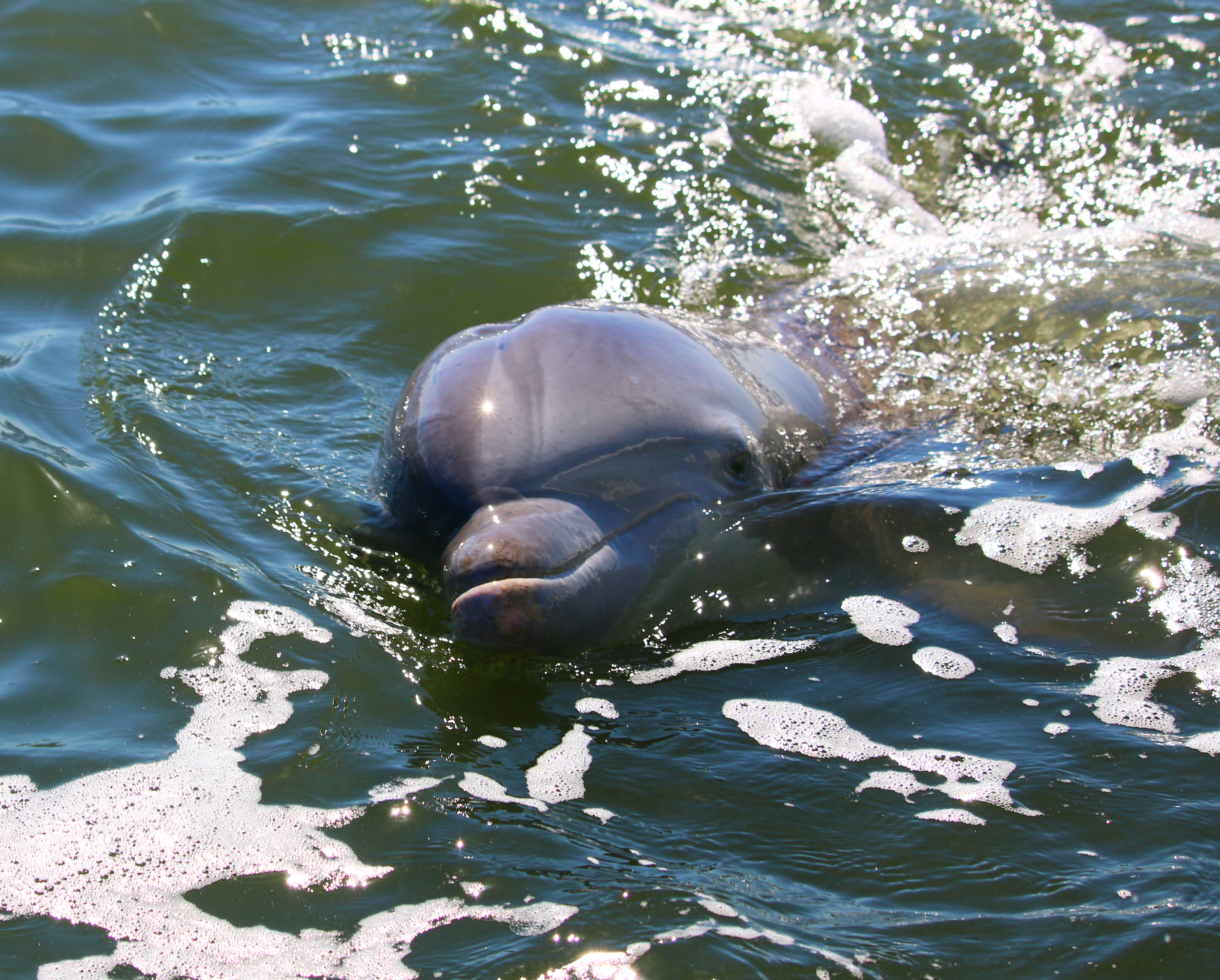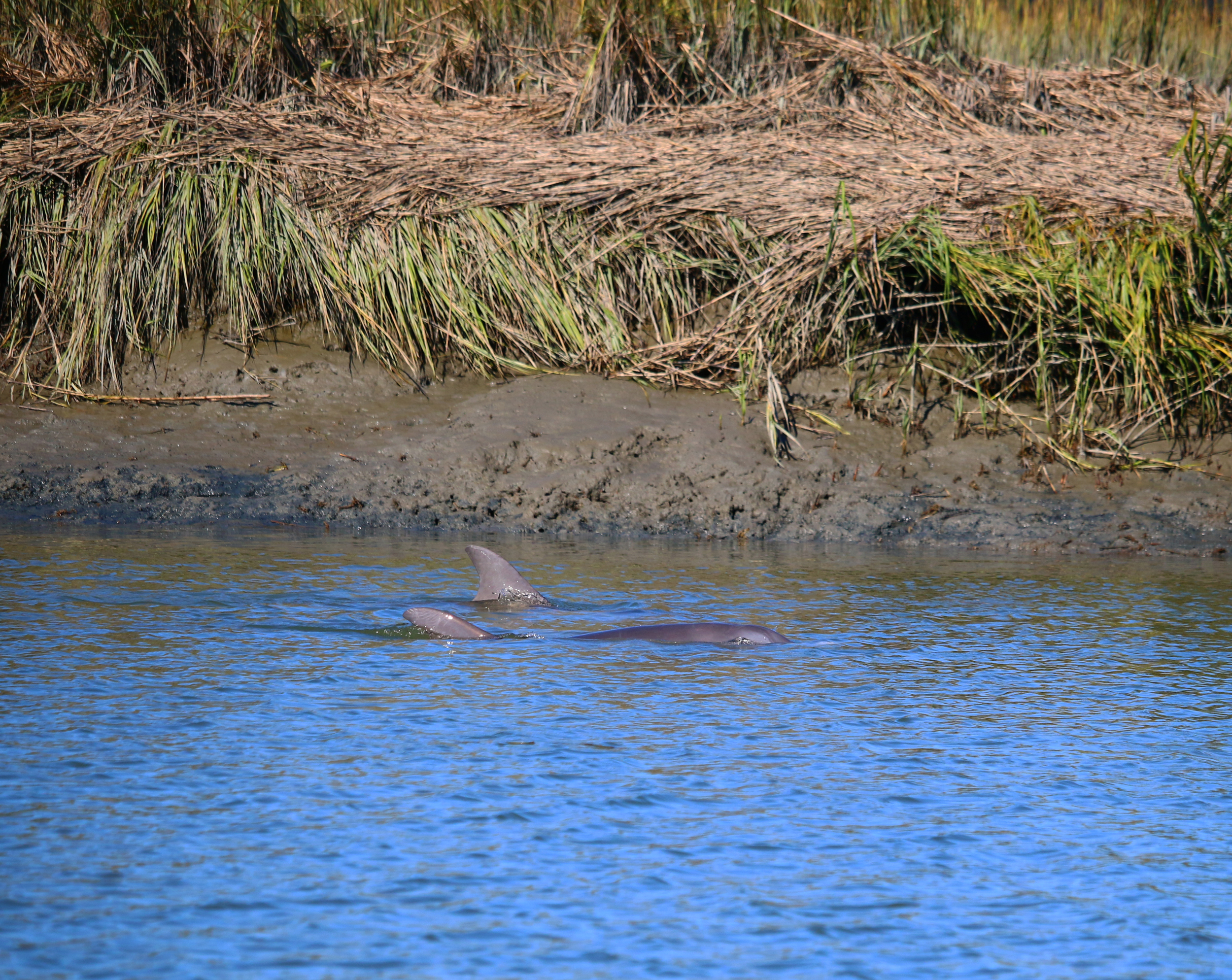Atlantic Bottlenose dolphins love to call Hilton Head Island "home". We have over 300 resident dolphins in the waters of Hilton Head Island, plus we have "vacationer" dolphins that visit in the summer bringing our count to around 800.
Dolphins are mammals, like us, which means they breathe air, they are warm blooded, they give live birth, the female milk their young, and they have hair. Many of us have never seen a hairy dolphin before. This is because when they are born, then have a thin layer of hair on their rostrum, or nose, that help them to find and attach to their mother's mammary glands, then those hairs fall out after a day or 2. If you're not around for the first day or so of a dolphin's life, you're not going to see a hairy dolphin.
The waters of Hilton Head Island typically get no lower than 60 degrees Fahrenheit in the winter. This is pretty cold, not the typical 75-80 degrees us humans prefer. Our residential dolphins don't have an issue with these temperatures because they have "blubber". Blubber is a thick layer of fat covering their entire body that helps to regulate their temperature.
Blubber is not to be confused with their "melon", or the bump that makes their foreheads so distinguished. Their melon looks like a fatty bump, or blubber, however this melon is what they use to send and receive signals especially in dark, murky water. This process is called "echolocation". Echolocation is a signal system using sound to see. Dolphins send out clicks, and depending on how long it takes to receive a click back, the dolphin can tell how far away an object is. If a dolphin sends a click and receives a signal back right away, they know the object is much closer than if they send a click and don't receive a signal for a fe seconds. They are also able to distinguish how big something is with this method. Echolocation gives them X-ray vision in a sense. Dolphins are able to echolocate through sand and know if there is a fish buried under the sand and how big that fish is (or if it will make a good meal).
Dolphins eat fish such as Mackerel, Caplin, Herring, and they also eat squid, octopus, crabs and shrimp. Our resident dolphins can weigh anywhere from 300lbs to 450lbs once full grown. This means they can go through a lot of food. Our adult dolphins eat anywhere from 20-30lbs of food daily. It's a good thing our waters are rich in life!
Hilton Head Island residential dolphins do something here that is unique to here and Australia. Nowhere else in the world does this happen. It is called "strand feeding". Strand feeding is when the adult dolphins literally strand themselves to catch dinner. It is more calculated than "let's strand ourselves today" though. The adult dolphins get together, 3 to 6 at a time, and push the water up on a muddy bank where they strand themselves. However, they also strand all the fish that were between them and the muddy bank, leaving the fish struggling and sometimes even jumping right into their mouths. Then, the dolphins wiggle back down into the water. It is specified "adult" dolphins because only the dolphins with a lot of experience have the confidence to try something so daring. When this occurs, you can usually see the baby dolphins waiting in the deeper water for their mothers to finish up.
Baby dolphins, or "calves", stay with their mothers for 2-3 years and then they eventually gain more independence. Sometimes the calves stay with their mothers their whole lives, not depending on them like the first 2-3 years but staying with their families. A dolphin's brain is structured to allow for self-awareness and is able to process complex emotions. This makes their bonds with each other very strong. This is why most of the time you will see them in "pods" or groups - because they are very social animals.
In Hilton Head Island, however, our dolphins like to venture out and explore on their own on occasion. Sometimes when you see a dolphin, you'll only see one, usually a male out exploring. However if you were to follow him, it wouldn't be long before he meets up with other dolphins with whom he associates. Our waters are unique in that it's not all open ocean. We have Broad Creek, May River, and Calibogue Sound along with many estuaries which are all salt water and a dolphin's playground. So we see a lot of times where they go off on mini-adventures but they are never far from their pod and they can always catch up.
Dolphins swim up to 25 miles per hour, which is pretty fast for not having a motor. Our dolphins are not afraid of boats because a lot of them remember the days they used to get fed. It is now illegal to feed dolphins because their stomachs aren't made to process Lil Debbies snacks and Cheetos, and when they begin to rely on this as a food source, they start to develop all sorts of health issues. Most of our older dolphins who remember "the good ol' days" come up very close to the boats and sometimes suffer the consequences.
Our dolphins sometimes have chunks missing from their dorsal fins, or large scars on their backs - most of the time this is from a boat encounter where they got too close. We have one dolphin, named "Chopper" by the locals, who in her younger years liked her Lil Debbies and got very close to boats. One day she got a little bit too close and now she is missing almost half of her dorsal fin. She is easy to spot! She recently had a calf and has been keeping her and her baby at a safe distance from boats ever since.
Click on the photo and video below to see more and learn more about our dolphins!
Pod of dolphins at Palmetto Bay Marina in the waters of Hilton Head Island.


